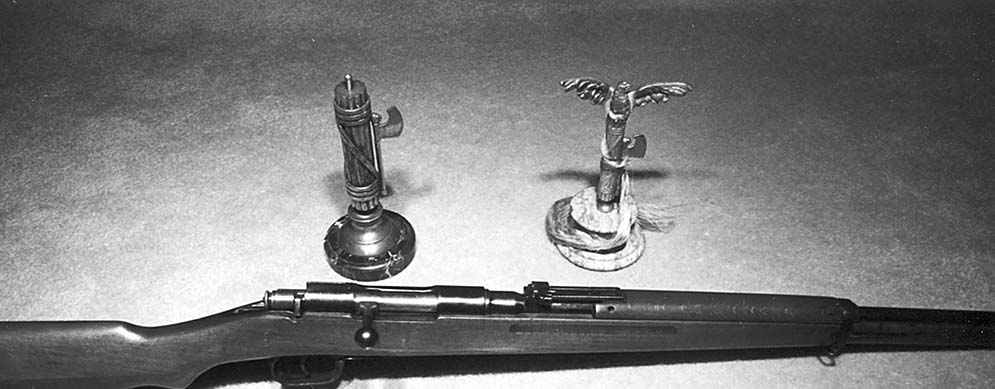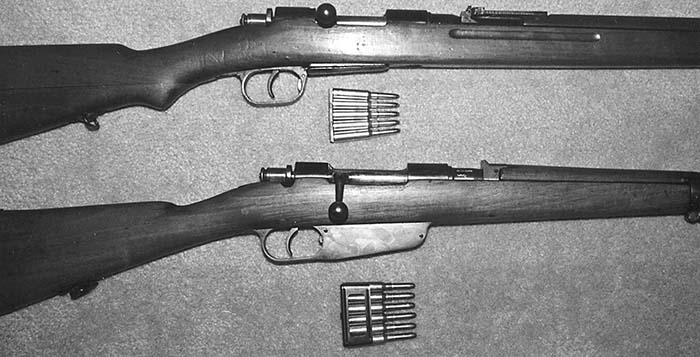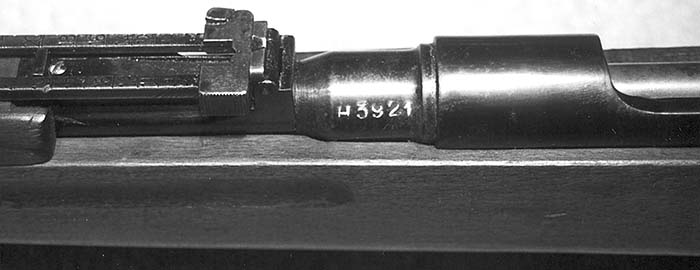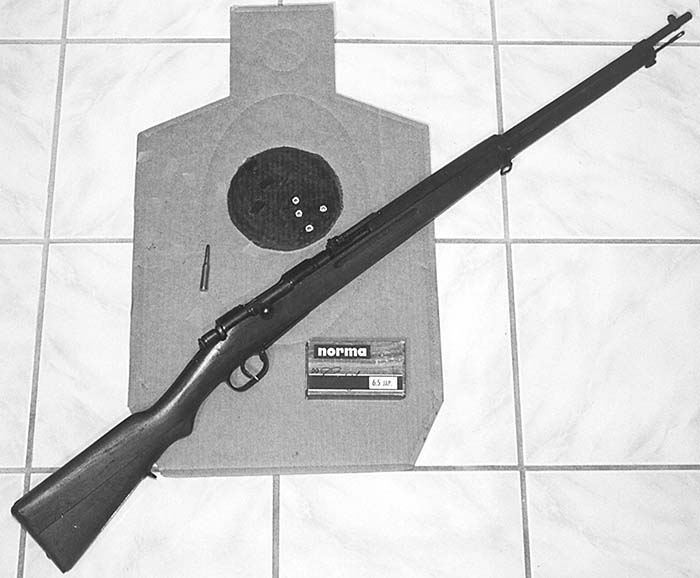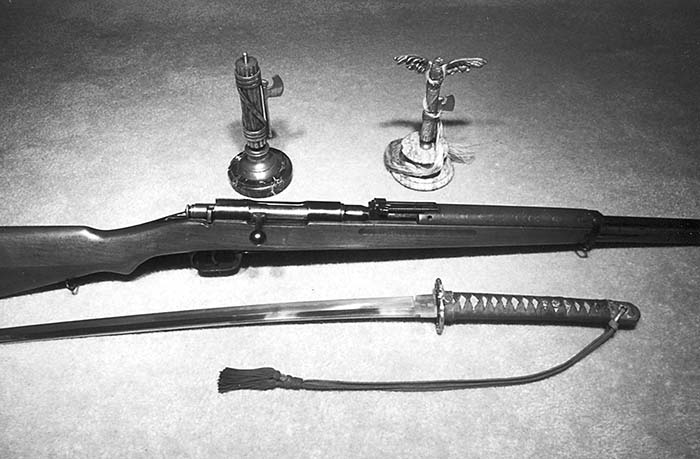By Anthony Dee
The Type “I” (pronounced Type “ee” by the Japanese) was a very unusual rifle that was used by the Japanese in several campaigns during WW II including the South Pacific.
It was conceived by the Mutual Aid Pact of 1937. This agreement signed by Italy, Germany and Japan promised support and needed supplies to the Axis partners. The Japanese were in desperate need of weapons as they were involved in conflicts in both Russia and China. The Japanese Navy negotiated the contract and it produced a very unique rifle.
The Axis powers had very distinctive differences in their respective weapons and tactics. The Germans and the Italians did share some common ground in the area of ammunition and shared several different weapons as the war progressed. The 9mm Kurtz (.380) or 9mm Corto and the 7.65 Browning (.32ACP) were used in various German and Italian pistols. The 1934 & 1935 Berettas and various Walther PPK’s, PP’s, Mauser HSC’s and Sauer’s shared this ammunition. Well over 20,000 Carcano rifles were chambered in 8mm Mauser by the Italians in 1938 and 1941. Towards the end of the war the Germans converted more as a last ditch effort for the Volkssturm. The 8mm Mauser was also chambered for the M-1937 Breda Machine-gun cartridge. The 9mm Parabellum was widely used in the 1938A and 38/44 Beretta submachine guns. The Japanese did not have any compatibility with their partners in this area. Their own weapons were chambered in a very confusing array of ammunition that were similar but not interchangeable. They had four different calibers for their Machine-guns along with two different calibers for their rifles. The only common bond that all three countries had was that they all used a bolt action rifle as their main issue infantry weapon and this was the basis for the Type “I”.
The Japanese required a rifle that was similar to the standard issue Model 38 Arisaka in almost every respect. In 1938 The Italian Royal Arms Factory (F.A.R.E., Fabbrica Armi Rego Esercito) designed and built a rifle that fit their needs and it was subsequently called the Type “I”.
This new rifle utilized a Model 91 Carcano action as a starting point. One major difference was that the single stack 6 round Mannlicher clip that was standard on the Italian Carcano was not used in the Type “I”. A staggered 5 round box magazine common to the Arisaka and the 98 Mauser was successfully mated to the Carcano action. The gun was then chambered in the standard 6.5mm Japanese semi-rimmed caliber and the action was notched to accept the Japanese stripper clip. The rifle also used the standard Japanese bayonet and sling. The sights were also similar to the Arisaka and were adjustable from 400 meters to a very optimistic 2400 meters. The front sight was adjustable by means of a dovetailed slot.
The stock was manufactured just like the Arisaka using the two piece buttstock. This design required that the buttstock be dovetailed and pinned together. The buttstock came in two different lengths. The shorter one should fit the average Japanese soldier just fine. The longer version seemed to be far too long for the average person. It has been reported that these longer rifles were specifically made for some Special Naval Landing Force units (The Japanese Marines); that had members of particularly large stature. These longer stocked rifles would fit these soldiers comfortably.
The Type “I” was built by three Italian arms factories between 1938 and 1939. Most were produced by “Gardone V.T”. (50,000 to 70,000), followed by “FNA Brescia” (30,000 to 40,000) and “Beretta” (20,000 to 30,000). The total estimated production was between 100,000 to 140,000.
There are no markings on the rifles that will tell you the manufacturer without disassembly. The serial number is all that appears visible on the left side of the chamber. If you remove the action you would see proof marks and the manufacturer marks on the bottom of the receiver. However, I have seen some rifles with no markings at all. An easier way to determine the manufacturer is the following guide. A letter code was assigned to the different factories to precede the serial number.
A, B, C, D, E, F > Gardone V.T.
G, H, I > FNA. Brescia
J, K, L > Beretta
Some “J” series rifles were made by FNA. Brescia due to an overrun.
These were very well built sturdy rifles that weighed in at an impressive 8 lbs. 12 ozs. They are a pleasure to shoot with a minimum amount of recoil and they are very accurate. The rifles used in this article are typical examples. One was made by Gardone and has the longer style stock. The other one was built by FNA, and it also has the longer stock. This gun has a mint bore and is very accurate. The group shown was shot at 100 yds with Norma factory ammo and measures just under 2 1/2 inches.
A great deal has been written regarding the poor quality and inaccurate Carcano rifle. I have found from personal experience that the Carcano is a very good weapon and with proper ammunition it can be a very accurate rifle. The Carcano served its country for over 60 years. I find it difficult to accept that any country would utilize a rifle in two World Wars if it was unsafe and inaccurate.
The Type “I” was used extensively in the Philippines and several were captured in the battle for Okinawa. They saw service in Peliliu, Burma and several other campaigns. They were also standard issue to several Japanese Navy units. These rifles served with distinction and are a unique piece of WW II History with a very unusual origin.
| This article first appeared in Small Arms Review V4N3 (December 2000) |



